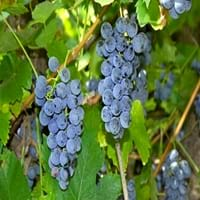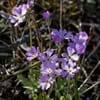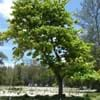Life Span
Perennial
Perennial
Type
Fruit
Bulb or Corm or Tuber
Origin
Northeastern United States, Mid-Atlantic United States, Southeastern United States, North-Central United States, Central United States, South-Central United States, Canada
Hybrid origin
Types
Not Available
boissieri , cupanii , hungaricum , kesselringii
Number of Varieties
Not Available
Habitat
meadows, Roadsides, Sandy areas, Terrestrial
Temperate Regions
USDA Hardiness Zone
3-9
Not Available
AHS Heat Zone
9-2
Not Available
Sunset Zone
1a, 1b, 2a, 2b, 3a, 3b, 4, 5, 6, 7, 8, 9, 14, 15, 16, 17, 18, 19, 20, 21, 22, 23, 24
21,22
Habit
Vining/Climbing
Clump-Forming
Minimum Width
Not Available
Flower Color
White
Purple, Violet
Flower Color Modifier
Bicolor
Bicolor
Fruit Color
Red
Not Available
Leaf Color in Spring
Green, Dark Green
Green
Leaf Color in Summer
Dark Green
Light Green
Leaf Color in Fall
Orange, Gold, Bronze
Several shades of Green
Leaf Color in Winter
Light Green
Light Green
Leaf Shape
Oval Cordate
Long Linear
Plant Season
Spring, Summer, Fall
Spring, Fall
Sunlight
Full Sun, Partial Sun
Full Sun, Partial Sun
Type of Soil
Clay, Loam, Sand
Loam
The pH of Soil
Acidic, Neutral, Alkaline
Acidic, Neutral
Soil Drainage
Well drained
Well drained
Bloom Time
Late Spring, Early Summer, Summer
Late Summer, Early Fall
Tolerances
Drought
Drought
Where to Plant?
Container, Ground
Ground
How to Plant?
Seedlings, Stem Planting
Divison, From bulbs, Seedlings
Plant Maintenance
Medium
Medium
Watering Requirements
Do Not over Water, Do not water frequently, Keep the ground moist but not water-logged, Requires a lot of watering, Requires watering in the growing season
Keep ground moist
In Summer
Lots of watering
Lots of watering
In Spring
Moderate
Moderate
In Winter
Average Water
Average Water
Soil pH
Acidic, Neutral, Alkaline
Acidic, Neutral
Soil Type
Clay, Loam, Sand
Loam
Soil Drainage Capacity
Well drained
Well drained
Sun Exposure
Full Sun, Partial Sun
Full Sun, Partial Sun
Pruning
Remove damaged leaves, Remove dead branches, Remove dead leaves
no pruning required
Fertilizers
All-Purpose Liquid Fertilizer, Fertilize every year, Nitrogen
All-Purpose Liquid Fertilizer
Pests and Diseases
Red blotch
Dry root rot, Pest Free
Plant Tolerance
Drought
Drought
Flowers
Insignificant
Showy
Flower Petal Number
Single
Single
Foliage Texture
Coarse
Coarse
Foliage Sheen
Glossy
Glossy
Attracts
Moths
Whiteflies
Allergy
Slows blood clotting
Poisonous to grazing animals
Aesthetic Uses
Not Used For Aesthetic Purpose
along a porch, deck or patio, Borders, Mixed Border, small hedge
Beauty Benefits
Improve skin condition
No Beauty Benefits
Environmental Uses
Air purification
Air purification
Medicinal Uses
constipation, Diarrhea, Eye Problems, Heart problems, High blood pressure, High cholestrol, Liver problems, Metabolic disorders
anti rheumatic, cathartic
Part of Plant Used
Fruits, Leaves
Root
Other Uses
Used As Food
Showy Purposes
Used As Indoor Plant
No
No
Used As Outdoor Plant
Yes
Yes
Garden Design
Edible, Fruit / Fruit Tree, Vine
Container, Cutflower, Foundation, Lawns and Turf, Mixed Border
Botanical Name
VITIS labrusca 'Catawba'
COLCHICUM 'Lilac Wonder'
Common Name
Catawba Grape, Fox Grape
Hybrid Autumn Crocus, Hybrid Meadow Saffron
In Hindi
Catawba अंगूर
meadow saffron
In German
Catawba Traube
Herbstzeitlose
In French
Catawba raisin
Colchique d'automne
In Spanish
Catawba uva
Estado de conservación
In Greek
Catawba Σταφύλι
meadow saffron
In Portuguese
Catawba Grape
Colchicum autumnale
In Polish
Catawba winogron
Colchicum autumnale
In Latin
Uva Catawba
autumnale
Phylum
Anthophyta
Tracheophyta
Class
Magnoliopsida
Magnoliopsida
Family
Vitaceae
Liliaceae
Clade
Angiosperms, Eudicots, Rosids
Angiosperms, Monocots
Tribe
Not Available
Not Available
Subfamily
Vitoideae
Not Available
Number of Species
Not Available
Season and Care of Catawba Grape and Meadow Saffron
Season and care of Catawba Grape and Meadow Saffron is important to know. While considering everything about Catawba Grape and Meadow Saffron Care, growing season is an essential factor. Catawba Grape season is Spring, Summer and Fall and Meadow Saffron season is Spring, Summer and Fall. The type of soil for Catawba Grape is Clay, Loam, Sand and for Meadow Saffron is Loam while the PH of soil for Catawba Grape is Acidic, Neutral, Alkaline and for Meadow Saffron is Acidic, Neutral.
Catawba Grape and Meadow Saffron Physical Information
Catawba Grape and Meadow Saffron physical information is very important for comparison. Catawba Grape height is 300.00 cm and width Not Available whereas Meadow Saffron height is 12.70 cm and width 20.30 cm. The color specification of Catawba Grape and Meadow Saffron are as follows:
Catawba Grape flower color: White
Catawba Grape leaf color: Green and Dark Green
Meadow Saffron flower color: Purple and Violet
- Meadow Saffron leaf color: Green
Care of Catawba Grape and Meadow Saffron
Care of Catawba Grape and Meadow Saffron include pruning, fertilizers, watering etc. Catawba Grape pruning is done Remove damaged leaves, Remove dead branches and Remove dead leaves and Meadow Saffron pruning is done no pruning required. In summer Catawba Grape needs Lots of watering and in winter, it needs Average Water. Whereas, in summer Meadow Saffron needs Lots of watering and in winter, it needs Average Water.





